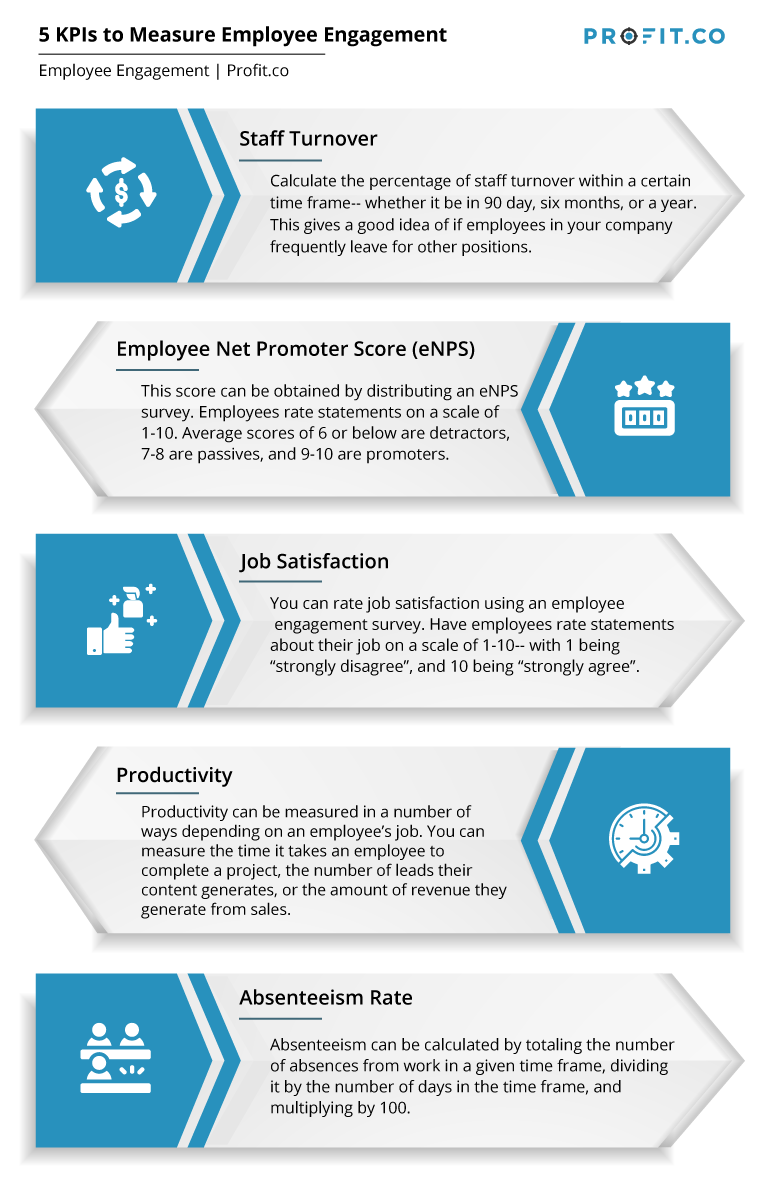Any time you think about achieving your company goals, one question that will pop up is how engaged the employees are. This is because their engagement plays a critical role in productivity and revenue growth. Measuring employee engagement gives you baseline data that enables you to track any changes or responses to different initiatives you roll out.
Research indicates that workers have three prime needs: Interesting work, recognition for doing a good job, and being let in on things that are going on in the company.
3 Types of Employee Engagement
In his study published by the Academy of Management, William Kahn identified engagement as physical, cognitive, and emotional. All these aspects contribute to a healthy balance in the way employees are engaged in their work. Let’s look at the three ways in which employees engage with their work.
1. Physically Engaged
When your employees are physically engaged, they show determination and vigor in their work. This in turn contributes to their productivity and the profitability of the business.
2. Cognitively Engaged
Cognitively engaged employees take time to understand the objectives of the company and relate it to how their role impacts the organization. They have a deeper awareness of the company goals beyond their personal tasks.
3. Emotionally Engaged
Emotional engagement extends beyond duty and touches on how connected the employees are to their colleagues and employer. When engaged emotionally, the employees feel the others around them are concerned about their lives, especially in difficult moments.
Most Popular Tools for Measuring Employee Engagement
Here are common ways to measure employee engagement:
1. Pulse surveys
These are brief surveys carried out in small periods like weekly or monthly. When used over time they are a source of data for continuous improvement of employee engagement.,
2. Exit interviews
When an employee voluntarily leaves, they might be ready to release information about why they resigned. This data gives you indicators on where to improve for the sake of those committed to working for you.
3. Personalized Meetings
With a personalized meeting, the team leader or moderator meets with the employee and talks in privacy. It is a safe environment for your employee to give valuable feedback especially when trust is first being cultivated.
Let’s delve into the metrics of measuring employee engagement levels.
5 KPIs to measure employee engagement

5 Key KPIs or Metrics for Measuring Employee Engagement
- Staff turnover
- Employee Net Promoter Score (eNPS)
- Job Satisfaction
- Productivity
- Absenteeism
1. Staff turnover
The rate of staff turnover gives you an indicator of how many employees have left over the year. To get the rate of staff turnover, you work out the number of employees who have left in the year divided by the average number of staff within the year and then multiply by a hundred. The normal rate is 10%. If you have a higher rate, then you may want to look at the reasons for this high rate.
2. Employee Net Promoter Score (eNPS)
The eNPS measures how willing an employee is to recommend their company to other people for employment. When they are loyal to their company, they are more likely to encourage friends or peers to work there. To measure the eNPS, use an employee survey and write questions with a scale of 1 to 10 where 10 indicates the employee is most likely to recommend their company and 1 for not at all likely.
Based on their rating, employees are graded in one of three categories. Promoters are those who give a rating of 9-10, passives give a rating of 7-8, and detractors give a rating of below 6. Promoters will give a recommendation, passives will neither give a good nor bad recommendation while detractors will definitely not recommend the company to others.
3. Job Satisfaction
One thing that leads employees to be fully engaged in their work is job satisfaction. It is hard to quantify satisfaction but the employees can state the reason for their score whether high or low. To rate satisfaction, use a scale of 1 to 10. Then follow up a question of the reason for their rating. This ensures the data you get is actionable.
4. Productivity
You can learn how productive your employees are by finding out if they meet deadlines, have a smooth workflow with their colleagues, and if the quality of the work they do meets the company standards.
5. Absenteeism
Calculating absenteeism can help you understand if employees are frequently taking time off from work. To calculate this, take the amount of absences in a given time frame, divide it by the time frame value, and multiply by 100 to get the rate of absenteeism. When the employees are consistently absent from work, you know they are not engaged enough and it affects productivity and company goals.
Final Thoughts
Improving engagement has a ripple effect on employee job satisfaction, customer experience, company credibility, and profitability. It is therefore important to plan for it and use the right tools in measuring employee engagement. The data you get will be authentic and actionable in improving engagement.

